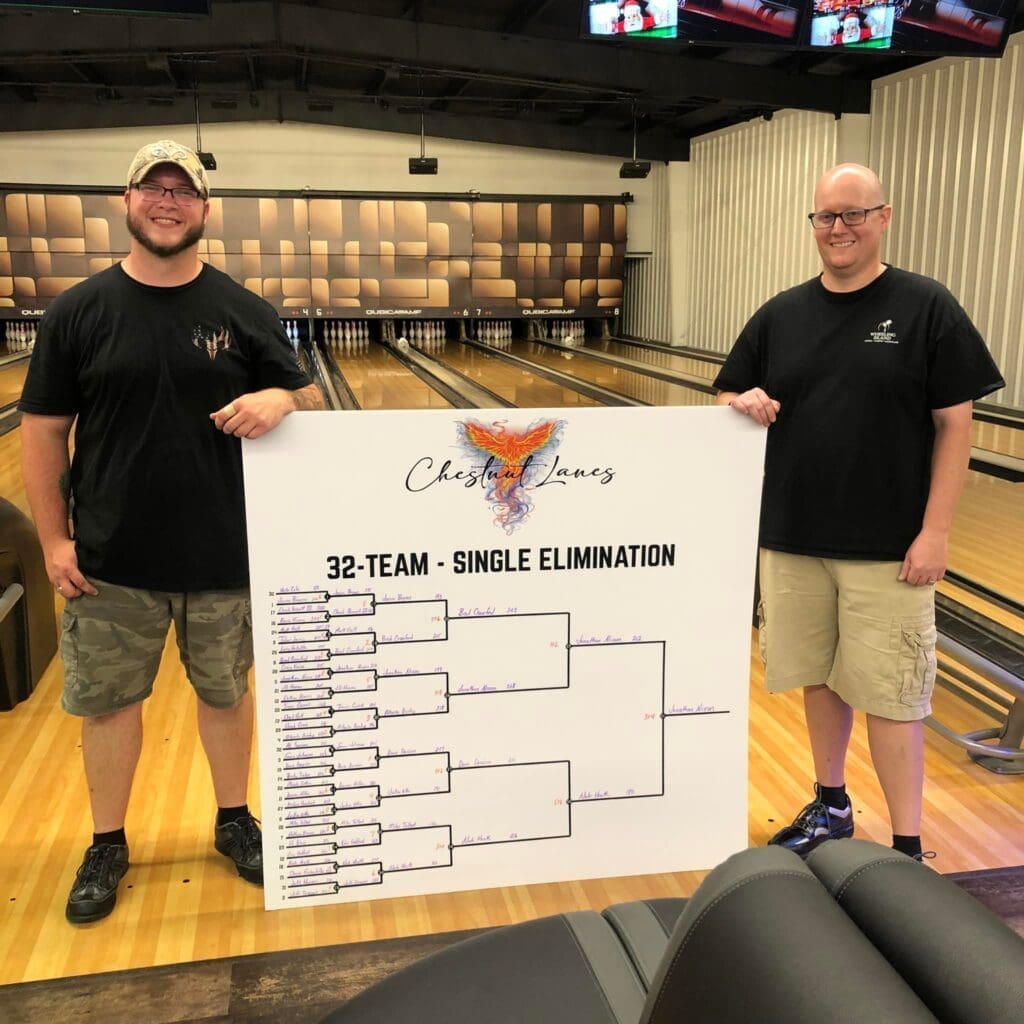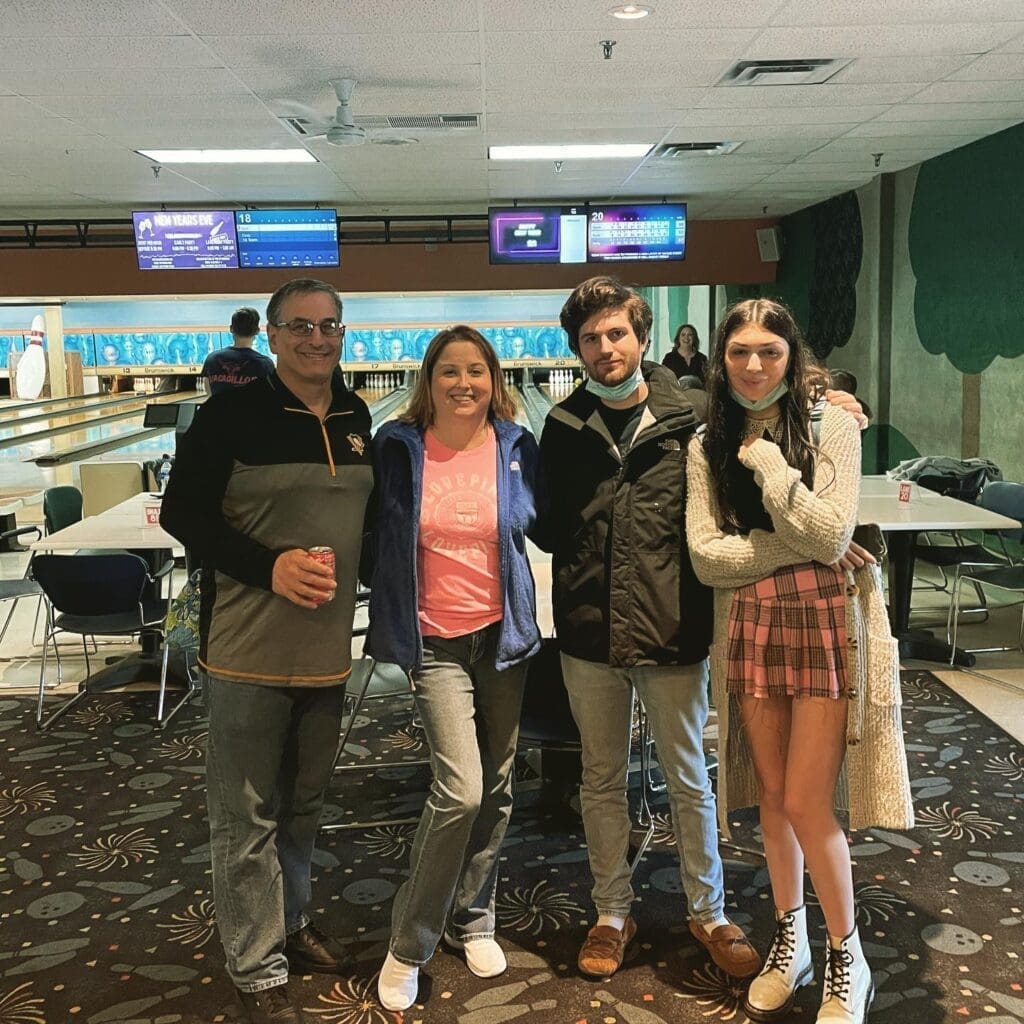(Publisher’s Note: This is the first in a three-part series taking a look at how bowling has evolved and continues to grow locally, particularly in Eastern Ohio. Parts II and III will take a look at how the growth of high school bowling has boosted the ranks of youth leagues and the bowling populace overall, while Part III will examine how two local bowling houses hope to take advantage of updated sports gambling laws in Ohio, as well as other options like live entertainment, to supplement their income and further add to their customers’ overall experiences.)
Bowling is a timeless recreational activity and lifetime sport. Here in the Ohio Valley, bowling houses have risen and fallen throughout the decades, offering centers of fun and gathering for generations of residents.
It’s a sport that doesn’t require a lot of money or equipment to get started–especially if one’s intentions lean toward the casual.
It can be played using a great degree of highly technical skill honed through years of practice. No one shows up on a whim and casually rolls a perfect game through sheer dumb luck.
That being said, it’s a sport that one doesn’t even need to be good at to enjoy.
Stop by any center during a weekend during the open bowling season. It won’t take long to find a group of friends, or a gathering of family members, laughing, carrying on, eating food, drinking, and all the while, not a single one is sniffing a triple-digit score for 10 frames.
Gutter balls will be galore; in fact, the more the better. Gutter balls can provide some of the best laughs of the evening.
That’s the beauty of bowling. It quite literally is for everyone.
But bowling, like any generational activity, has to evolve with the times if it hopes to stay relevant.
Some of the Ohio Valley’s best bowling houses can be found inside Belmont County, places like St. Clair Lanes in St. Clairsville, which originally began operations back in the 1960s.
You also have Chestnut Lanes in Barnesville, another longtime popular destination that had to rebuild from the ground up recently after a fire all but destroyed the original facility.
But rising from the ashes like the phoenix that is featured on the outside of its building, Chestnut Lanes reopened in May and had its grand re-opening back in June.
No one rebuilds to join an industry they think is fading. But even owner A.J. Corder is elated at the response his house of bowling receives on a nightly basis since its rebirth.
“We opened in May and had our grand opening in June, but it’s been a lot busier than I expected,” Corder said. “We have about 800 more square feet, there’s the outdoor patio, and we’ve expanded the snack bar area and installed more TVs.”
St. Clair Lanes, meanwhile, didn’t have to rebuild. But the longtime facility run by the Holubeck family has made a number of changes, and upgrades, both of which are aimed at bringing in more clientele and creating lifelong fans of bowling and customers.

Embracing Technology
Perhaps more evident at Chestnut Lanes because of the overall newness of the entire facility is the embrace of technology.
Long gone are the days of manually keeping score by hand, and neither facility has done so in recent history. But the scoring machines are both are geared toward technology. Bowlers can now have their picture on the screen next to their name if they so choose. All scoring is digital, and there are a number of built-in games that go beyond the typical 10-pin scoring system if desired.
It’s more than just that, however.
Look down the lanes at Chestnut, and you’ll notice a wall of TVs. There are also flashing lights, lights that change colors and are reactive to the bowler’s success—or lack thereof.
“The pin deck lights change colors and can react to what the bowler does,” Corder said. “If the bowler throws a strike, it will flash a certain color, and the same if someone throws a gutter or gets a split; some of these are geared toward a younger crowd, but open bowling is about fun and having a great experience with family and friends.”
League nights and events are where serious bowlers and those looking to improve their skills can come and work. Those times, the fancy lights are off, and it’s straight lighting, down to the business of boosting averages.
Both St. Clair and Chestnut Lanes boast snack bars with ample dining options that can rival any smaller eatery. Those options are always being tweaked and expanding, and so is the way in which customers order.
People are embracing the digital world and its insertion into all points of life.
St. Clair Lanes allows its customers to not only make lane reservations online but also place food orders digitally.
Bowlers can access the menu and place their orders from the bowling circle at their lane utilizing the scoring machine and need only come to the counter to collect their food.
“One of the new things we’re doing is the online reservations,” said Gary Holubeck of St. Clair Lanes. “Young people like to order food online too instead of calling and picking it up, and we find that the technology is popular with the young people especially.
“It seems to work out a lot better and is easier on our staff.”

Newer Pricing Model
A big change customers will notice is how the bowling houses go about charging their customers.
In the past, each bowler paid a per-game fee, plus a shoe rental. Now, there is a $25 per hour fee per lane. That includes shoe rental as well for everyone on the lane. So whether you’re bowling solo, or have a large gathering of 4-8 people, it’s $25 an hour.
For some used to the old model, it takes a moment to get used to. However, they quickly realize the per-hour model is beneficial in a number of areas.
“We switched (pricing models) when we put the new scoring system in back in February (of 2021),” Holubeck said. “The customers seem to like it a lot better. It gives them more flexibility, and they don’t feel as pressured. They know they are bowling for one hour or two hours, and they are done.
“People have busy lives, and it makes it easier to plan.”
A lot of couples and group dates utilize the bowling alley as part of their night’s activities. When you are trying to combine a night of bowling with dinner, or even dinner plus a movie, waiting for someone to finish a game so you can take advantage of a reservation can throw an entire evening’s plans off.
Timed bowling makes it easier for both customers and the bowling centers to plan what’s available and when.
“It’s basically the industry standard, and the only place it wasn’t was in the Ohio Valley,” Corder admitted. “The old scoring system wasn’t able to accommodate timed bowling, but with this new system, it can. It’s actually cheaper, per game, especially when the customer understands exactly what they are paying upfront, and it makes it easier to split the costs.”


